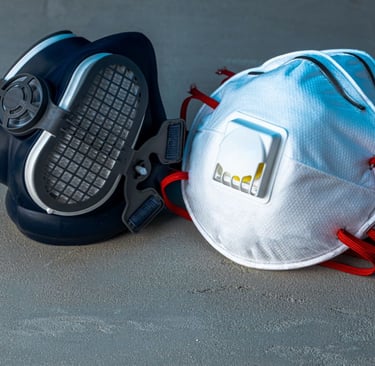
Interview with Stuart Letley, Handsam's Lead Health and Safety Auditor


Can you outline the purpose of a school Health and Safety Policy?
The main function and purpose of a Health and Safety Policy is to outline the commitment that a school has to managing health and safety and then to go further and establish how it organises that, who is responsible for what and how specifics are arranged around controlling different risks on site


Can you give me three key points which every Health and Safety Policy should contain?
The three things that every Health and Safety Policy should contain are, initially a statement of intent. This is a statement that the school intends to be compliant, which then goes further to commit to ethically and morally managing health and safety in a good way. The second point is outlining organisation, by setting out the responsibilities for all aspects of safety management across the school, from the Board of Governors, to the Head Teacher and anybody who has any specific key responsibilities for safety in between. Then the final part is the arrangements, covering how the school manage specific risks. This is a set of procedures as to how things are done.
What would you identify as the number one overlooked health and safety issue in schools?
The number one overlooked issue in terms of health and safety that I see in schools is the management of safety around powered gates. This is because schools have either fitted powered gates from scratch because they feel that there is a safeguarding or security concern or they have retro-fitted power to existing gates. There are a lot of contractors around who do not have the appropriate skills, knowledge, qualifications and experience to fit these gates in what I would consider to be a safe manner. This is why I am such a strong advocate of the Gate Safe charity, which trains suppliers to an accredited standard so that gates can be deemed to be safe and risk assessed and demonstrated to others to be safe.
What makes a positive health and safety culture and why is it important?
A positive health and safety culture is really important because firstly it makes life easier and secondly because it makes a school a safer place to be. A positive health and safety culture is one where everybody is pulling in the same direction, where safety is the number one key priority. When you have a culture where everyone sees and understands and buys into that kind of attitude to safety, the load is shared, everybody plays their part and you are not spending time and effort changing hearts and minds
What would be your top three tips for a safer school?
The first thing I would always advise if a school hasn’t done it, or hasn’t done it recently, is to have a health and safety audit. Having a health and safety audit is an extremely good way to try and understand the strengths and weaknesses of safety management within the school. Schools can understand what needs to happen overtime and plan. Schools are very good at planning, but very often you don’t see a health and safety plan and safety needs to be planned just like anything else. If you don’t know where you’re going then ultimately you won’t get there.
Secondly, on the back of a health and safety audit I would suggest that a good training programme is always going to be beneficial, be it purely classroom training or be it a mixture of classroom and online training as well. This ensures staff understand that the school puts a healthy emphasis on safety and are prepared to invest to give staff the knowledge and the skills to be able to manage safety themselves.
The third point would be to demonstrate your commitment to health and safety by making sure that you have safety as part of any meeting which happens across the school. Make sure that safety is on the agenda and when it is on the agenda that it is high up and not near the bottom, or indeed just above any other business. To place safety low down your meeting points is to make a statement to staff and everybody else who is involved in the school community that you don’t place much emphasis on safety, that it is only given as much emphasis as just above any other business. If you put it high up the agenda then, what you are saying is that you really value safety and want to ensure that before doing anything, before educating, that people are, and will be, safe.
What role would you say risk assessment plays (in the realm of policies)?
Risk assessments are extremely important to schools, the way I see risk assessments is effectively the only opportunity to have a proverbial crystal ball. It is a way of practically sitting down and thinking about what may or may not happen and ensuring that what we have in place is sufficient and if it is not sufficient then what do we need to do about it. This needs to be a very pragmatic process; it does not need to be in anyway complex and it needs to reflect reality. Be reasonable, it is not a stretch; it is achievable for people to do. The risk assessment is where everything starts and that will obviously feed from there through to systems, procedures and policies, so once we understand our risks and we understand how to manage them, then we can develop policies and procedures. SO it is a step by step process. It is very logical the way I see it, it does not need to be onerous.
What would you say is the role of educators in making children more risk aware?
Educators have a really important job in making children risk aware and by that I don’t mean removing risk from their lives or making the environment of schools completely padded cotton wool cells. Children need to be exposed to risk in order to be able to understand and to learn how to manage it. That being the case, it is a matter of educators demonstrating to children that they can do things, but if they plan them then they can be done in safe ways albeit there is always going to be an inherent element of risk. The other thing is understanding that sometimes things do go wrong and we need to learn from those. So when they do go wrong, we learn and we move forward and we do something differently the next time.
What would you say is the biggest health and safety myth you encounter in schools?
The biggest myth that I see in schools is that health and safety is a pain and gets in the way of what they want to be able to do. I don’t see safety like that at all, in fact I see safety as being a facilitation of how we get to where we want to get to, but to get there safety. I think that very often school staff see safety as being just a paperwork exercise, whereas I see safety as something which is very dynamic and actually affects, change, behavior and the way that people ultimately think and then it can have a really positive influence, rather than being this classic myth of health and safety gone mad, which it should never be when we are being sensible and proportionate about risk.
Why is it important that accidents are investigated fully and that learning takes place?
It is extremely important to investigate accidents. If we don’t investigate accidents or incidents, indeed where there hasn’t been an injury purely because of good fortune, what I would class as a near miss, then we won’t learn and therefore won’t understand what we need to do in future to prevent another accident or indeed the accident that hasn’t happened yet. It is really important to get to the crux, the root cause as to why whatever it is has happened and that might be as simple as if someone has tripped over something in the playground, moving the thing or filling in the hole. But we might need to understand that there is a deeper root cause as to why that happened in the first place, why the hole was allowed to exist and why no one spotted it in the first place. Do we need more inspections, do we need more training, and do we need to understand that we can raise safety issues so that there is a positive safety culture so that we can preempt these things. So always when we are looking at these things, accidents or incidents in schools, or indeed any other environment we are looking to get back to that root cause as to why it happened so we can prevent it in the future
Why is managing slips and trips so important in schools?
It is extremely important to manage slips and trips, it is the greatest cause of accidents in schools, the most frequent accidents occur due to slips and trips. Unfortunately slips and trips can happen and they won’t result in a particularly serious incident, accident or injury, but sometimes they will. It is the smallest things sometimes which means that someone can get quite badly hurt and that can mean pain and distress for them, time off work. Financial implications, not only when it comes to pupils but members of staff as well. We have to be proactive, we have to think ahead and plan and make sure that we don’t leave things for people to trip over and we manage our premises well and that we are proactive in terms of cleaning up spillages and things and we don’t walk on by.
Why is it important to have a lone working policy in place?
A lone working policy will give a school a formal structure to manage the risks around someone being on their own when they work and there will be a scale of risks from those working in offices alone to those working on more manual work, where an accident is potentially more likely to occur. It is a matter of identifying where these issues arise and making sure that we have proportionate sensible practices in place to ensure that people who are left alone don’t come to harm in a way that they would otherwise not in the company of someone else. I have had example of a teacher who was lone working late at night in school and unfortunately had a heart attack and wasn’t discovered until the following morning, because that person did not have a partner at home who was able to raise the alarm. I have also had instance where people were doing manual work. A gentleman was working up a ladder and fell off that ladder in school, who again was working alone and therefore the alarm wasn’t raised immediately because no one knew about it. Sensible controls and a certain limiting of high risk activities while working alone can help to manage these risks.
What would be the key things a school needs to have in place in order to be compliant with fire legislation?
They must have a suitable and sufficient risk assessment, conducted by a competent person, so someone who has sufficient training and experience to allow them to understand fire risk in the context of that school and its risk profile. That needs to be a trained contractor who has been brought in, unless there happens to be in-house experience within the schools. Once the risk assessment is in place, the key is to then manage the action plan from the back of that risk assessment. But we know that it is absolutely critical that staff are trained. They must be trained in safety awareness and in the schools procedures in terms of reacting to an emergency situation and how we deal with it and what then happens. One of the biggest things I see in schools is new employees being overlooked and not understanding from day one what those systems and procedures are and that is why induction is important to bring staff on board in terms of procedures for fire, emergency and indeed any other safety emergencies that schools may have.
What would you say were your top tips for managing contractors effectively?
Managing contractors in school like any other environment is about communication. The better the communication, the better and the safer the management of those contractors, so it is about sharing information, sharing the information that the school has on risks. You have to remember that a contractor is coming into the school and does not know the environment as well as school staff or anybody else working the school will have. Therefore they need to be told and they need to be told about the schools structures and procedures in terms of emergencies as well. Be proactive with contractors.
What would be the main things to ask schools to consider around security?
Security in any school is going to be relative to the environment they find themselves within, the school population and the community which they sit within. But I think there has to be a sensible discussion around how secure a school is, and that does not mean that every school has to be completely self-contained and locked to the outside world, that is simply not appropriate for some schools, but for others in a certain context. Therefore I think it is quite important to undertake a security review and to understand what are the proportionate recommendations for any given school. There are some really good self-help tools that schools can use to undertake a self-review should they wish to do so.
What would you say is the role of educators in making children more risk aware?
For anyone who undertakes manual handling tasks regularly, here are a couple of quick tips. One is to think of it like any other physical activity in as much as it is quite useful to warm up first before you start doing some really strenuous work. I have seen that in many contexts when people have been injured because they just launched themselves into some strenuous activity like clearing the chairs from the dining hall. Actually a little bit of limbering up first goes a long way. The other thing is to plan, so whatever job you are doing that involves some form of manual handling, use the five second rule take a step back, think about it first and think: " is what I am doing the best way of doing it?". Very often there are easier ways of doing things that don’t often involve manual handling, it might be that we can use some form of trolley, sack barrow or other piece of kit or we can arrange the job in a different way that makes things that much easier if we just take the time to plan in advance.
What would you say would be the key considerations for planning the delivery of first aid in a school environment?
When it comes to first aid within a school environment it is really important to take that step back and to understand first of all how many first aiders we need. There are ways and means of doing this, but essentially what needs to happen is a bit of a brainstorming session around the layout of the school, how many people we have, any remote buildings , any context where we might have people leaving site, or indeed if we have sports happening, have we got sufficient cover which is local to where the sports are occurring. It is very important to do what I would consider a first aid risk assessment which determines the level of cover we need and where the kit and equipment needs to be. That will help a school manage any incidents and accidents quickly and easily.







Office 27, East Moons Moat Business Centre
Oxleasow Rd, Redditch B98 0RE
Phone: 0333 207 0737


